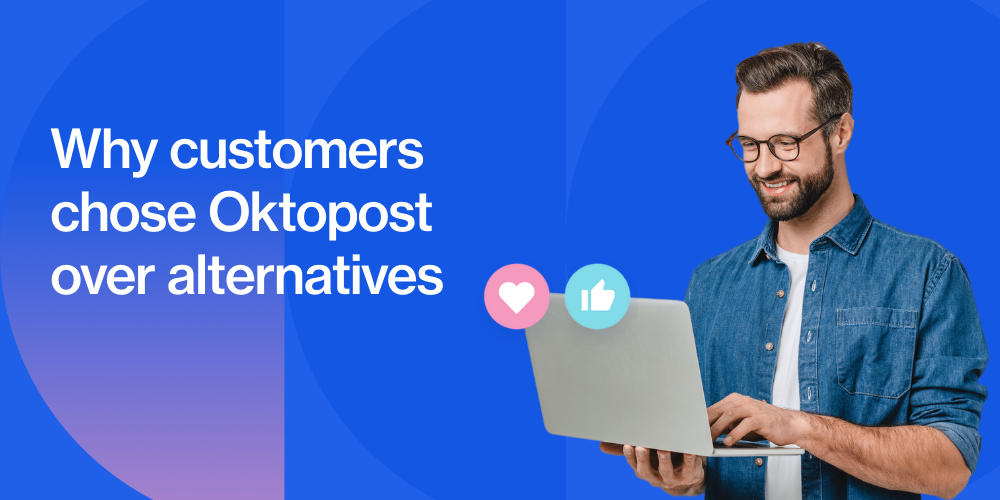5 tactics to turning Instagram stories Into a B2B marketing tool

Table of contents
Snapchat found a mode of storytelling that became a near-overnight success, and Instagram Stories jumped on the bandwagon.
Within a year, Instagram Stories—which operates as a sub-experience within the standard Instagram app—was drawing 300 million daily users, quickly overtaking Snapchat’s daily user numbers, and beating the brand at its own game.
Instagram Stories are often revered for their social appeal, especially among younger generations. This has led some marketers to assume that, for everything the Stories function can offer B2C brands, it isn’t as strong of a vehicle where B2B marketing is concerned.
But those assumptions would be wrong.
While there’s a much larger body of work from B2C brands using Instagram Stories, forward-thinking B2B marketers are finding ways to leverage Stories as a storytelling vehicle that helps shape the customer journey while driving business for their companies.
Forward-thinking B2B marketers are finding ways to leverage Instagram Stories as a storytelling vehicle that helps shape the customer journey while driving business for their companies. Click To Tweet
Enough B2B companies, like Intel, IBM, Hubspot, and Yotpo have found success with Instagram Stories that newcomers have a reputable roadmap to work with when plotting their own B2B Stories strategy.
If you’re looking to use Stories for your B2B brand but don’t know where to start, here’s a guide to five platform-specific cornerstones you’ll want to incorporate into your strategy.
1. Create serialized content
The lifespan of Stories is much different than other content posted on Instagram. While an Instagram photo lies on the platform indefinitely, Stories disappear after 24 hours. But rather than limit the ROI potential of this content, the short lifespan of Stories content creates an immediacy and exclusivity to the content experience.
It also creates a simple vehicle for creating episodic content. Since all of your Stories posts are linked together when your content is viewed, B2B marketers can use this functionality to create episodic content over a concentrated span of time.
This can be useful in breaking down complex concepts, demonstrating how products and services work, or simply taking advantage of longer-form storytelling.
Look at how IBM used Instagram Stories to show how the company’s emerging technologies are solving real-world problems:
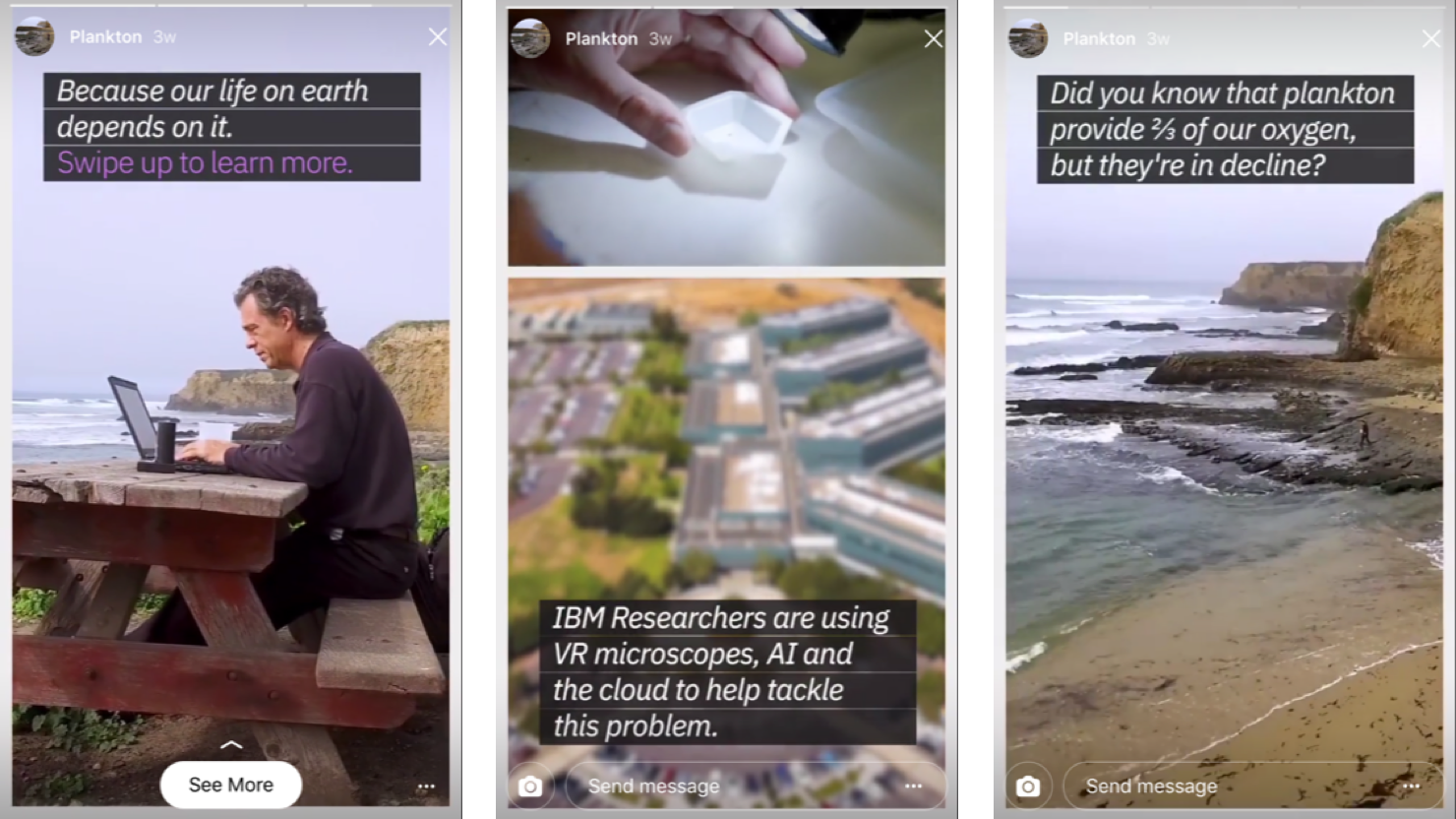
Similarly, a product designer could spend a day creating content that showcases how to use a new business software tool. Or, an engineer working on new robotics technologies could take over the company’s Instagram Stories for the day, publishing short videos that bring the audience behind the scenes to witness a day in the life of an engineer.
In both cases, the cost of production is next to nothing, but the intimate experience shared with an audience can deepen brand awareness and trust.
2. Boost thought leadership
Thanks to the limited lifespan of content, Instagram Stories offers an inherent sense of exclusivity that brands can harness to engage an audience through thought leadership.
This is an opportunity to adopt the intelligence and charisma of C-suite executives to share their vision for the company, their thoughts on the future of the industry, their philosophy when it comes to solving customers’ problems, and other insider information sought by a B2B audience.
Look at how content expert Gary Vaynerchuk uses Instagram Stories to build his brand, strengthen his visibility as a thought leader, and offer value to his audience by guiding them toward useful resources:
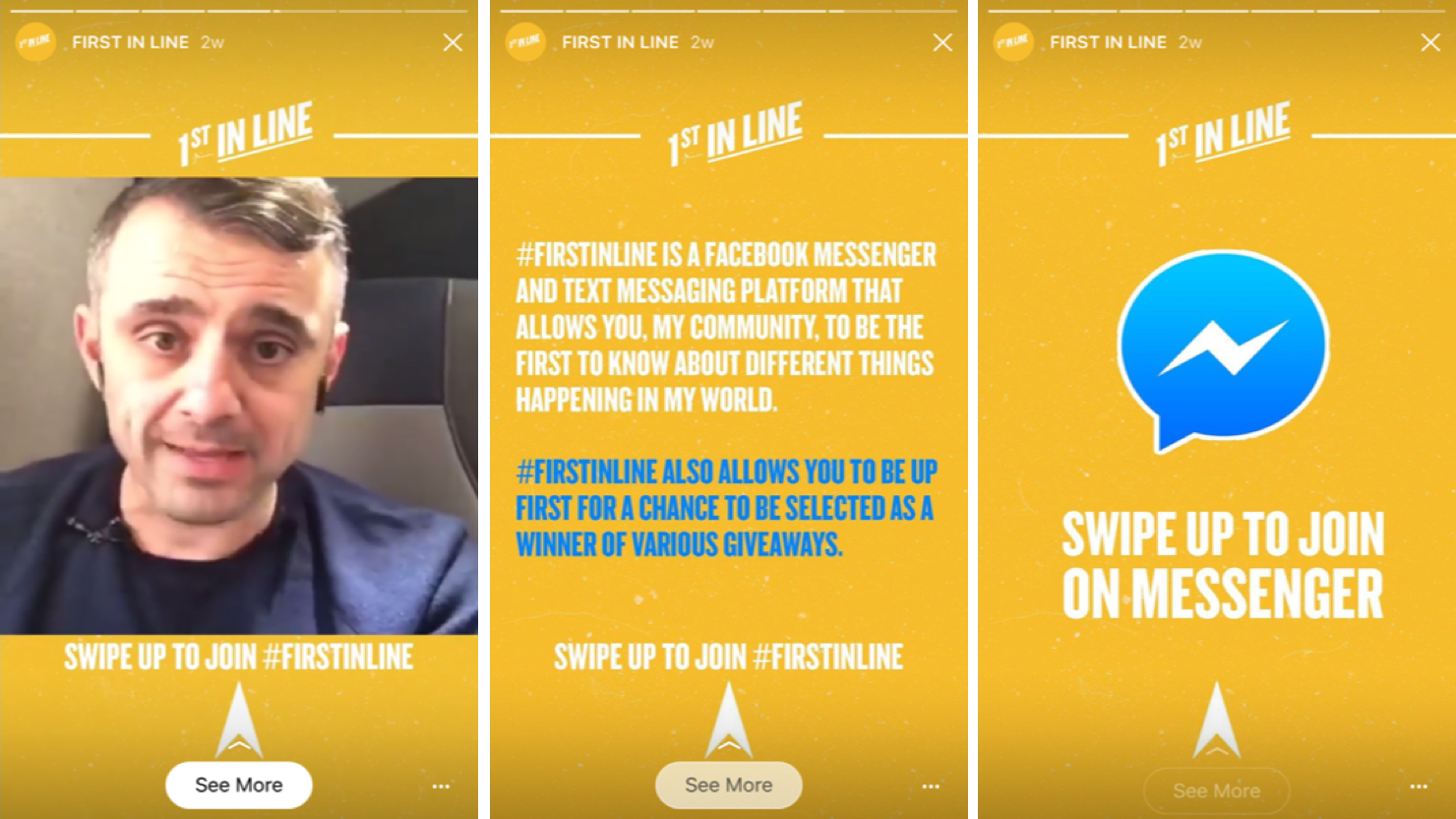
Although Vaynerchuk’s marketing strategy is focused on peer-to-peer relationships, the strategy can easily be translated to B2B brands. Businesses selling artificial intelligence solutions can feature executives and engineers who explain how the technology works.
A robotics company, on the other hand, can have engineers, developers, designers or other leaders explain and demonstrate the value of these robotics tools in manufacturing or other business use cases.
With this thought leadership opportunity currently underutilized by B2B brands, forward-thinking businesses have a golden opportunity to get ahead of the game.
Recommended for further reading
3. Build a content funnel
With serialized Stories, brands can create a mini-funnel to drive viewers toward a conversion.
Each self-contained Story can utilize content that moves from top-of-funnel, awareness-focused pictures and video to mid-funnel content that aids in research and information gathering, and finally pushes users toward a conversion.
For B2B brands, this likely comes in the form of generating a qualified lead for the sales team to handle.
Throughout the Stories content, CTAs can attempt to either capture a social referral or increase engagement through a “See More” swipe function. Look at how Cisco uses Stories to promote its Annual Cybersecurity Report—first by raising awareness, then offering a sample of the information the report features, and finally offering a CTA:
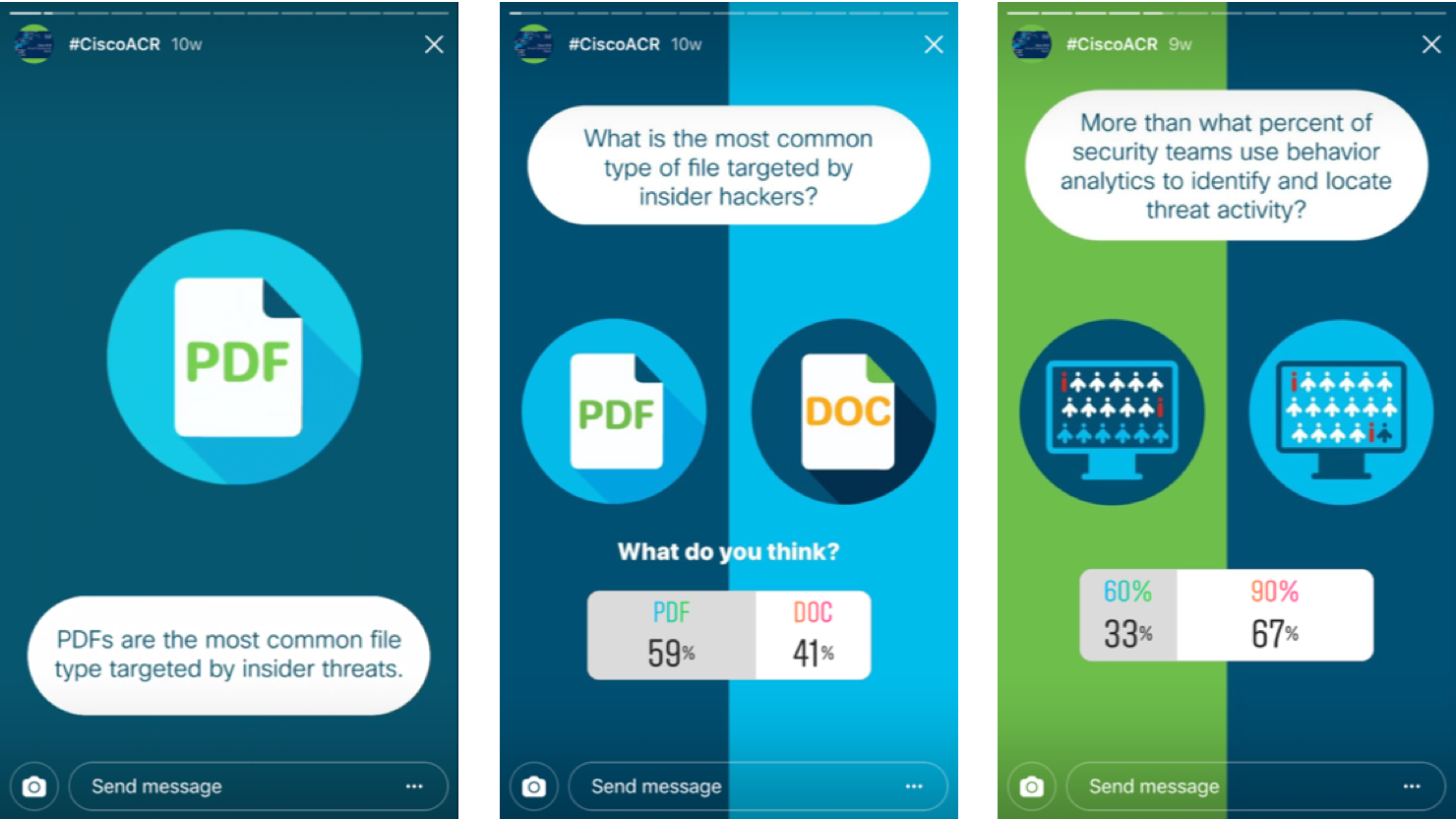
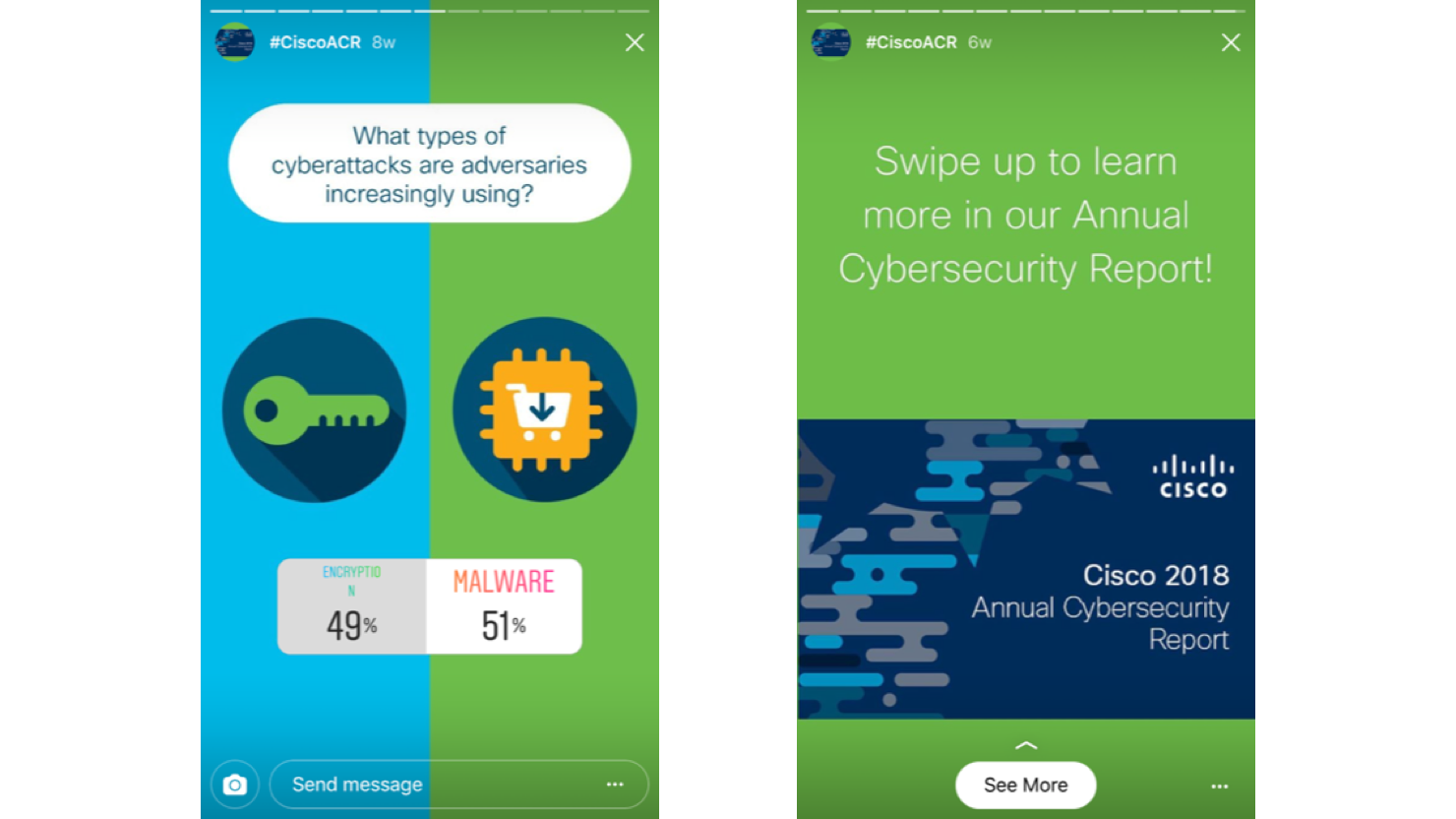
Stories is unique in its ability to create this self-contained, funnel-focused content on a social media platform, and it’s well worth experimenting with as a B2B brand.
4. Inject some personality into your brand
Instagram Stories is anything but a bland, dry platform.
It’s safe to say that whatever works on LinkedIn won’t work here. The user experience offered by Stories—which includes visual effects and a feature that will let you incorporate popular music into your posts—makes it easy to liven up your brand story.
B2B brands can combat the risk of consumer boredom by using this content to showcase the company’s culture and other behind-the-scenes stories, using the effects of Instagram Stories to inject some excitement into their content.
MailChimp is well-known for using Stories and other social platforms to promote its fun work culture and happy employees:
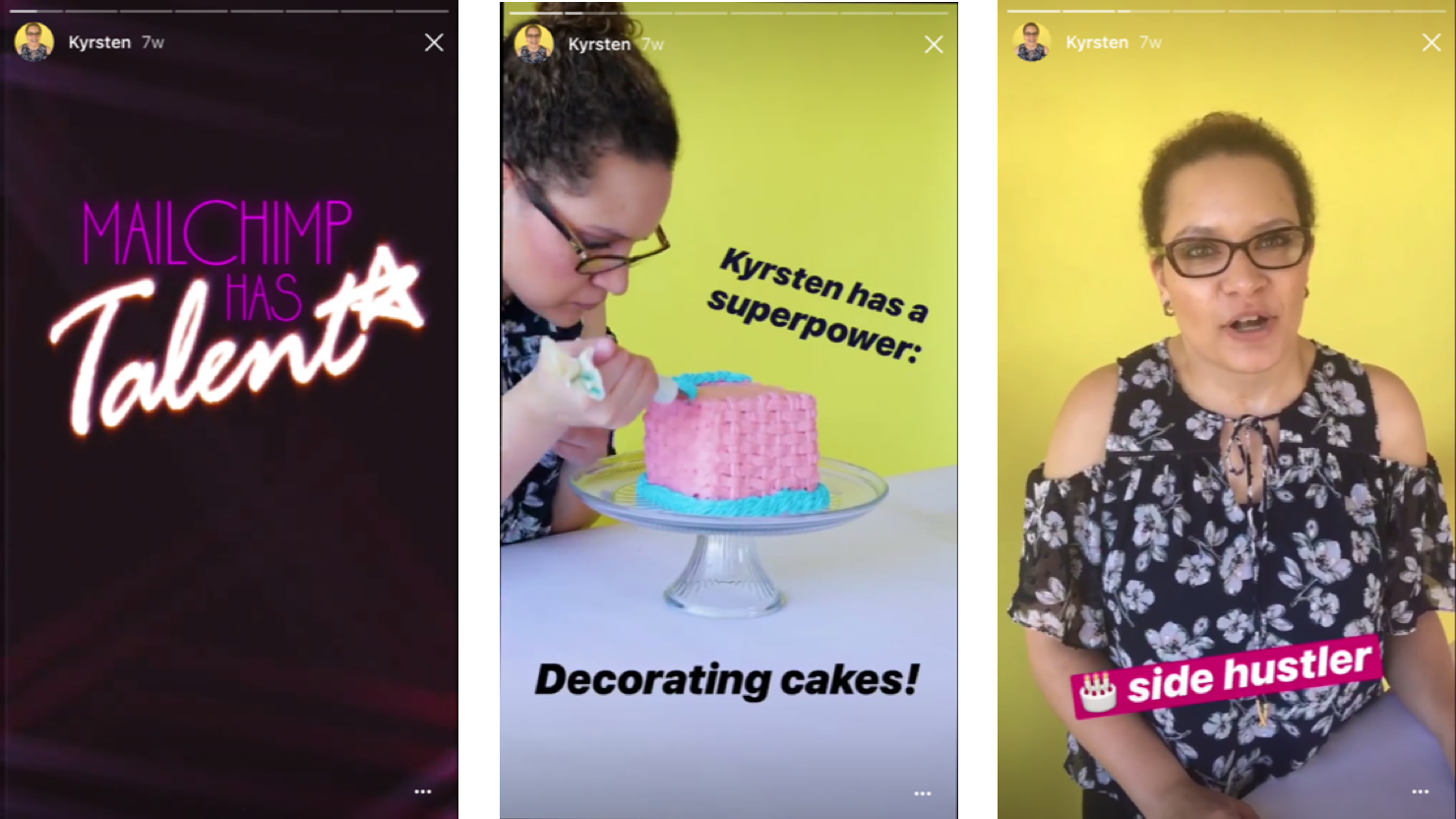
This is one of the more common ways B2B businesses use Stories for self-promotion, and while it may not have a direct ROI payoff, cultivating this personality can help shape the attitudes of buyers you interact with, and it might also make your business a more appealing destination for potential job applicants.
5. Don’t forget to add the link
For B2B companies, one of the biggest game-changers for Instagram Stories is the ability to add a link to each individual piece of content. Not only does this create a number of CTA opportunities, but it’s a feature that still isn’t offered with traditional Instagram posts.
In that sense, Stories offers much more referral potential than a regular Instagram post, which can only drive referrals by asking users to click on a link in the account’s bio—and the bio only accommodates one link, so brands must choose their link wisely.
Instead, Stories give you that option every time you post a new picture or video. The numbers suggest that failing to add a link could be a devastating mistake: Marketing Land reports that within the first month of Stories allowing links in content, the swipe-through rate for brands and publishers was somewhere between 15 and 25 percent.
Even on the low end of that estimate, that volume of clicks is a huge opportunity for any brand. B2B marketers should aim to include these links wherever possible to maximize their ability to refer traffic from Instagram Stories to more conversion-focused online destinations.
Will stories be your new format?
B2B marketers may be wary of investing too much time into a social platform more often associated with young consumers than with enterprise brands. But Stories has drawn other major B2B companies on the merits of its user experience, its massive active user base, and its expanding features that make it more B2B marketing-friendly.
Instagram Stories has drawn major B2B companies on the merits of its user experience, its massive active user base, and its expanding features that make it more B2B marketing-friendly. Click To TweetStories has drawn other major B2B companies on the merits of its user experience, its massive active user base, and its expanding features that make it more B2B marketing-friendly.
When the cost-of-entry is next to nothing and the potential ROI keeps going up, B2B brands would be crazy not to try their hand at using Stories to reach their audience.



